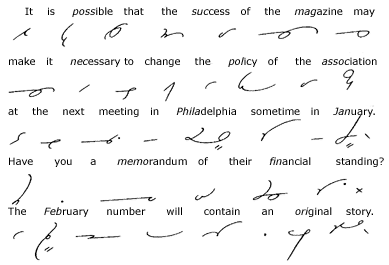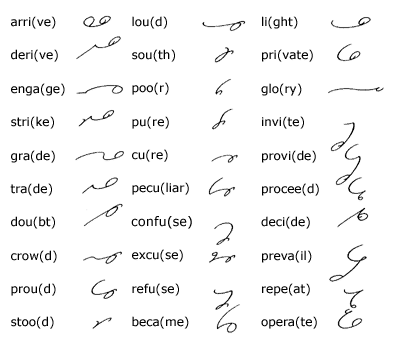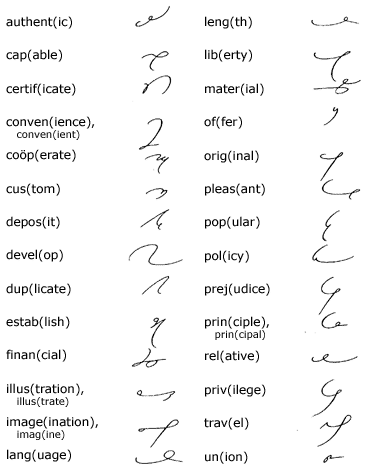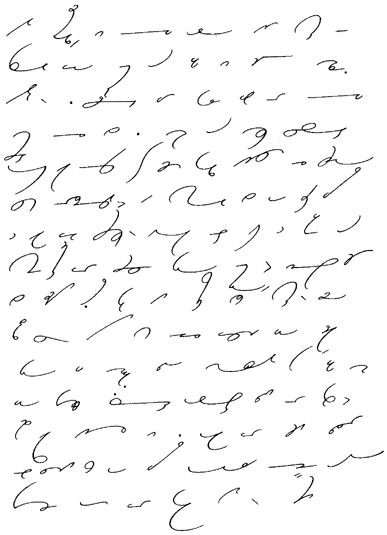| Home Reporting A Judge’s Charge Dupraw’s Notes Sklarew’s Notes Zoubek’s Notes Pre-Anniversary Description Reference Material Brief Form List Anniversary Description Reading Material Reference Material Brief Form List Most-Used Phrases Simplified Description Brief Form List Dupraw on Note Size Diamond Jubilee Description Brief Form List Expert Brief Form List Series 90 Description Brief Form List Centennial Description Brief Form List Taquigrafía Gregg Gramálogos German Gregg Manual Esperanto Gregg Manual Brief Forms Irish Gregg Manual Gregg Group Gregg Learning Forum Ms. Letha’s SH Site Shorthand³ Omniglot's Entry Wikipedia's Entry Stenospeed Dictation Practice Andrew Owen |
CHAPTER IX Unit 25 The Abbreviating Principle 192. The application of the abbreviating principle discussed in Chapter I, paragraph 23, many illustrations of which previously have been given, is more or less flexible and depends to a large extent upon the familiarity of the writer with the words and subject matter in the dictation. Note how the principle is applied in the following illustration:
The abbreviating principle is not employed when advantage may be taken of analogical or definite word-building rules, and it should not be employed when easily written word forms are possible without it: When in doubt write it out. 193. Short Words. In a small but useful group of common words—many illustrations of which have been given throughout this manual in "Brief Forms for Common Words"—the form stops with a diphthong or a strongly accented vowel:
194. Long Words. An analysis of hundreds of words shows that the abbreviations of long words falls into three classes, from which the following rules have been established: 195. If there is a longhand abbreviation, it is generally used, if it furnishes a distinctive outline, as in the words amount (amt.), April (Apr.), balance (bal.), memorandum (memo.):
*Memoranda is written mema; street is written st only with a street name, otherwise it is str. 196. Write through the accented syllable if the outline is distinctive. Illustrations: abbrev for abbreviate, lang for language, elab for elaborate, etc.:
197. Reading and Dictation Practice
|
|
Preface About Gregg Shorthand Editor's Note A Talk with the Beginner The Alphabet Chapter I Unit 1 Unit 2 Unit 3 Chapter II Unit 4 Unit 5 Unit 6 Chapter III Unit 7 Unit 8 Unit 9 Chapter IV Unit 10 Unit 11 Unit 12 Chapter V Unit 13 Unit 14 Unit 15 Chapter VI Unit 16 Unit 17 Unit 18 Chapter VII Unit 19 Unit 20 Unit 21 Chapter VIII Unit 22 Unit 23 Unit 24 Chapter IX Unit 25 Unit 26 Unit 27 Chapter X Unit 28 Unit 29 Unit 30 Chapter XI Unit 31 Unit 32 Unit 33 Chapter XII Unit 34 Unit 35 Unit 36 |




